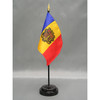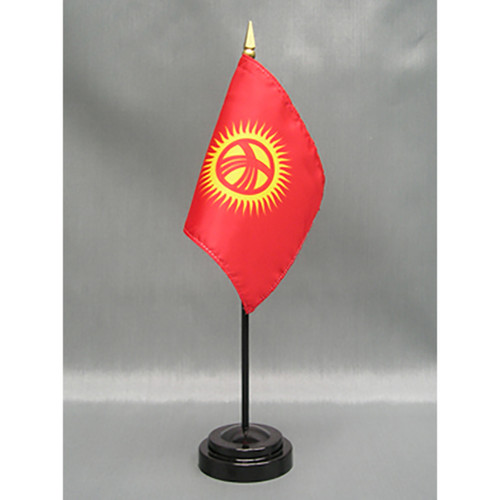Product Description
Endura-Gloss is a silk-like fabric exclusive to Eder Flag Manufacturing Company, Inc.; measuring 4” x 6” and mounted on a black plastic staff with a gold spear topper. Every E-Gloss flag is brilliantly printed to each flag’s government specification. The edges of each flag are hemmed to keep the flags from fraying like most other handheld options on the market. These 4” x 6” flags are perfect to show your patriotism at work or home while it sits honorably on your desk. All of our E-Glosses are made here in the United States.
This E-Gloss Handheld features:
- Silk-Like Feel and Flowability
- Vibrant, Vivid Colors
- Black Plastic Staff
- Gold Spear Topper
- Printed Flag
- Hemmed Edges
- Table Bases Sold Separately
- Made in America
Andorra, located south of France and north of Spain, is a sovereign landlocked microstate. The etymology of the name is unknown. The oldest derivation of the word Andorra is from a Greek historian Polybius who describes the Andosins, an Iberian Pre-Roman tribe, as historically located in the valleys of Andorra. The word Andosini or Andosins may derive from the Basque word handia which means “big” or “giant”. Another theory that was put forth suggests that Andorra may derive from the Arabic word al-darra meaning “the thickly wooded place”. Due to the thick tracts of forest in the valleys of the High Pyrenees when the Arabs and Moors conquered the Iberian Peninsula, they would give these regions this name. The flag features a vertical tricolor of blue, yellow and red with the coat of arms of Andorra in the center. The three vertical bars at first glance have a similar width but in reality, the middle yellow bar is slightly bigger with the dimensions being 8:9:8 making the overall flag ration of 7:10. The historical flag of Andorra was used between 1806 to 1866, it featured only two vertical red and yellow bands at the time. The modern variant is said to have been designed by Napoleon III when he added the blue band to represent France. The flag itself is an amalgamation of the surrounding countries, lands and diocese. The only found difference for the seal or no seal is when it is used in the country; citizens usually fly the flag without the coat of arms while at international embassies they fly their flag with the coat of arms.







